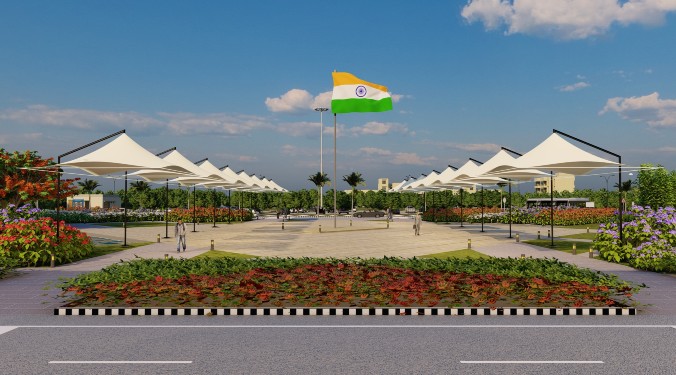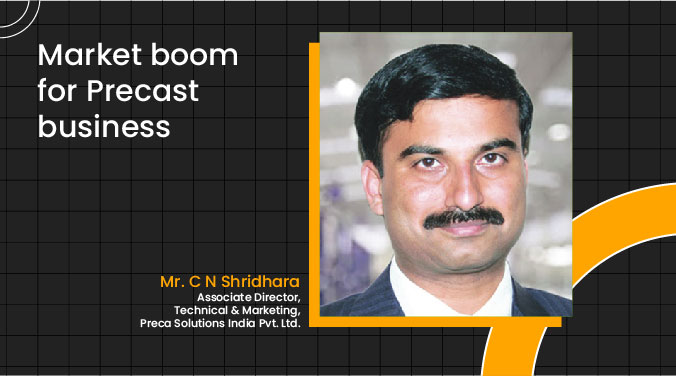“Sustainability is everything that we need for our survival and well being, either directly or indirectly,” says Architect Prem Nath, Prem Nath & Associates
Green buildings are more than just sustainable. They not only save energy but also add luxury. The future buildings would be designed efficiently, taking advantage of natural light and ventilation. In a conversation with ACE Update, Ar. Prem Nath talks about his responsibility to create liveable, sustainable development.
Important characteristics of green architectureGreen is in vogue — every architect is speaking of a LEED-rated project. Every developer is trying to get ahead in the race of providing green homes and healthy living with certification and becoming a show-off and sales gimmick.
Ar. Nath has been practicing green and sustainable architecture as a routine. He adopts the old principles of environment-based design with cross ventilation and natural light, which is tried and tested method of green design. His projects not only depict what is green in design but also speak of zero depletion, renewable energy, thermal comfort and low VOC materials.
Today people boast of creating gold-rated building, while Ar. Nath has already created a “gold graded township” with multiple structures and infrastructure, and he created ahead of others.
Green buildings will be the way of life. Perhaps it will be known as green living — all buildings would be designed efficiently, taking advantage of natural light and ventilation, which was already part of our ancient culture.
It is era of “smart homes” having bio-metric gadgets and sensors that save energy and simultaneously add luxury.Achieving sustainability in architectureThere is no need to achieve sustainability in architecture. This is not something new which architects are doing. This is in their routine. For Ar. Nath, sustainability is everything that we need for our survival and well being, either directly or indirectly. On our natural environment, sustainability is important to make sure that we have and will continue to have the natural resources to sustain human health and environment.
Today we are talking about it and more worried about it because it is today’s necessity. Centuries ago, our ancient innovators paid more attention to sustainable features like stepwells which created low-tech “evaporative cooling” of surrounding area, courtyards for internal cross ventilations, and nets which not only gave the decorative effect but helped reduce the heat. Traditionally, we have always gone for eco-friendly structures and countless examples of sustainable composition in our heritage treasure.
While mimicking the western world, all the above traits were somehow ignored or forgotten. Vast industrialisation has already changed the climate pattern and is damaging it. Construction activity, pollution and industrial developments, highly automated construction, energy guzzling buildings, controlled environment, overcrowded cities and growing traffic are leading us to global warming which is clearly a danger signal not only for us but for our future generation also.
Now it is the time where we need to go back to our basics and learn from it.
As an architect, Ar. Nath owns the responsibility to create liveable, sustainable development. He has been taking lead and put his step forward and conceived various projects such as a green residential township in Punjab, which was added with a lot of value addition in terms of its eco-friendly features and awarded gold grading by the Environmental Ministry, rainwater harvesting, sewage treatment plant, solar water heaters, insulated walls and ceiling, a LEED-rated school in Gujarat, a green SEZ-IT park, sustainable commercial tower and many more.
It’s not just important for a development to be sustainable, but it should also be green. The development must be able to live the fourth dimension, i.e. test of time.
Green roofs and IndiaGreen roofs are the effective strategy for beautifying the building and built environment. It has lots of benefits like absorbing rainwater, providing insulation, creating a habitat for wildlife, increasing benevolence and decreasing stress of the people around the roof by providing a more aesthetically pleasing landscape and helping lower urban air temperatures and mitigate the heat-island effect.
Green roofs replace a hard infrastructure with one that’s not only more efficient but also beautiful and useful. As environmental awareness is increasing worldwide, global warming is becoming major concern. India is also playing a responsible role by using eco-friendly material.
Over a period of time, it is observed that roofing materials and their supporting elements are being considered for lightweight, recyclable and allowing use of natural light source as much as possible. Therefore, we can expect that green roofs will find their place on large scale in future, and the green roofing industry is likely to expand in the upcoming years in India.
The current exploration of sustainable building designs in modern Indian architecture affirms that the future is likely to be dependent on high-efficiency systems and green design.
LEED – the most favoured rating systemAr. Nath has delivered many projects which got gold and platinum ratings by LEED. The idea of green rating of buildings has taken roots in India. This is in-line with the global trend in which the rating tools set benchmarks for green measures for constructing and using buildings to make them sustainable and to reduce their negative impacts on environment.
Both GRIHA and LEED India are operating at the national level. These ratings have a checklist of criteria and points that are assigned to these criteria, based on their relative importance.
LEED is well established and internationally renowned. It is also the most favoured rating system among the private sector. On the other hand, critics call it “too American” as the United States Green Building Council (USGBC) has not allowed it to be indigenised enough for it to work well in the local context. For example, water is a critical resource in India but LEED offers far fewer points for water conservation in comparison to GRIHA. Also, building commissioning is a mandatory requirement in LEED, but this is not a common practice in India and usually considered an unnecessary expense. These are few issues that one might find frustrating when working with LEED in India.
GRIHA on the other hand is made in India for India and thus has many criteria that make total sense in the Indian context. Compliance criteria for worker safety and well being are one such example. India is a tropical region, and we can take advantages of shading devices, cross ventilations and water conservation through which we can save 95 per cent of energy.
The green certification depends on the how much energy one saves through the technique, controversies are just nothing to do with these criteria.
Green designs by PNAPrem Nath & Associates is a “complete design organisation” having professional practice in architecture and interior designing, including project management consultancy and MEP services. Its long list of green designs includes LEED Platinum rated school in Gujarat, LEED Gold rated HMEL township in Bhatinda, a micro-township by Ajmera Developers, and Bhakti Park in Wadala.
Cookie Consent
We use cookies to personalize your experience. By continuing to visit this website you agree to our Terms & Conditions, Privacy Policy and Cookie Policy.









